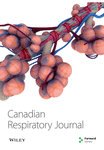Pulmonary Ossification Syndrome in a Patient with Chronic Thromboembolic Pulmonary Hypertension
Abstract
First described more than 150 years ago, diffuse pulmonary ossification is a rare disease that can be idiopathic or secondary to an underlying chronic disorder. Commonly under-recognized and challenging to diagnose, clinical, radiographic and functional tests are often necessary. Given the increasing prevalence of chronic lung disease in the aging population, it is likely the pulmonary ossification will be encountered in clinics more often. This article describes the diagnosis of the condition in a 51-year-old man.
Pulmonary ossification syndrome is a rare disease characterized by bone tissue formation in the lung parenchyma with or without bone marrow elements. This disorder, often under-recognized, can be idiopathic or secondary to an underlying chronic disorder such as chronic thromboembolic pulmonary hypertension. The pathogenesis involves tissue injury and an alkaline environment in which the precipitation of calcium salts enables alkaline phosphatase activity. This activates profibrogenic cytokines that convert fibroblasts into osteoblasts. Diagnosis can prove challenging and is based on clinical, radiographic and functional tests, and by tissue biopsy. Achieving an accurate and timely diagnosis is essential to avoid erroneous treatments due to misdiagnosis and to expand knowledge of its progression, prognosis and treatment. As the population and prevalence of chronic lung disease increases, it is likely that physicians will encounter more cases of pulmonary ossification.




